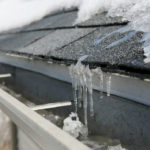
How To Get Rid Of Grubs In Your Lawn
Maintaining a lush, green lawn is a dream for every homeowner. However, the presence of grubs can quickly turn that dream into a nightmare. Grubs are the larvae of different kinds of beetles, and they feed on the roots of your grass, causing extensive damage to your lawn. If left untreated, these pests will wreak havoc on your once-beautiful yard. But don’t worry, because help is here! In this ultimate guide, we’ll show you everything you need to know about eliminating grubs from your lawn. So, whether you’re an expert gardener or a newbie, read on for some invaluable tips and tricks that will help you to reclaim your lawn and keep it grub-free all year round!
What are grubs, and why do they damage your lawn?

Grubs are the larvae of beetles, including the Japanese beetles, chafer beetles, and June beetles. These pests can be found in soil and feed on the grass roots, causing extensive damage to your lawn. The damage caused by grubs can be severe, leading to brown patches and even dead spots in your lawn. Grubs can also attract other pests, such as skunks and raccoons, that feed on them, causing further damage to your lawn.
But why do grubs damage your lawn? Well, the answer lies in their feeding habits. Grubs feed on the roots of grass. The roots are what absorb water and nutrients from the soil. When grubs damage the roots of grass, the grass becomes weak and susceptible to other diseases and pests. This weakens the grass and can eventually lead to its death.
Signs of a grub infestation
Identifying a grub infestation early is crucial to preventing extensive damage to your lawn. Here are some different signs to look out for:
— Brown patches: If you notice brown patches in your lawn, it could be a sign of a grub infestation. These patches often appear in irregular shapes and can spread quickly.
— Wilting grass: Grubs feed on the grass roots, causing it to wilt and turn yellow.
— Loose turf: Grubs feed on the roots of grass, causing it to become loose and easy to pull out.
— Increased pest activity: As mentioned earlier, grubs can attract other pests, such as skunks and raccoons, that feed on them. If you notice more pest activity in your lawn, it could be a sign of a grub infestation.
If you notice any of these signs, take action now to prevent further damage to your lawn.
How to prevent grubs in your lawn
The best way to deal with grubs is to prevent them from infesting your lawn in the first place. Here are some preventative measures you can take:
— Keep your lawn healthy: A healthy lawn is less susceptible to grub infestations. Make sure to fertilize your lawn regularly and water it deeply and infrequently.
— Mow your lawn regularly: Keeping your lawn at the proper height can help prevent grubs from laying their eggs in the soil.
— Reduce thatch buildup: Thatch is a layer of dead grass and other organic matter that accumulates on the surface of your lawn. This layer can provide an ideal breeding ground for grubs. Make sure to remove thatch buildup regularly.
— Use nematodes: Nematodes are microscopic worms that can be applied to your lawn to control grubs. They are a natural and effective method of grub control.
By taking these preventative measures, you can reduce the risk of a grub infestation in your lawn.
Chemical vs. natural grub control methods
If you do have a grub infestation in your lawn, you’ll need to take action to eliminate them. There are two main types of grub control methods: chemical and natural.
Chemical grub control methods involve the use of pesticides to kill grubs. These pesticides can be effective but can also be harmful to the environment and other beneficial insects in your lawn. It’s essential to follow the instructions carefully when using chemical pesticides and to avoid using them near water sources.
Natural grub control methods involve the use of natural predators or other natural substances to control grubs. For example, nematodes are a natural predator of grubs and can be applied to your lawn to control their population. Other natural methods include using milky spore, which is a bacteria that kills grubs, and applying neem oil to your lawn.
The choice between chemical and natural grub control methods depends on your personal preference and the severity of the infestation.
A step-by-step guide to treating a grub infestation

If you’ve identified a grub infestation in your lawn, here’s a step-by-step guide to treating it:
— Identify the severity of the infestation: Before taking any action, it’s essential to identify the severity of the infestation. You can dig up a small section of your lawn and count the number of grubs present.
— Choose the right treatment method: Based on the severity of the infestation, choose the right treatment method, either chemical or natural.
— Apply the treatment: Follow the instructions carefully when applying the treatment. If using a chemical pesticide, make sure to wear protective clothing and avoid using near water sources.
— Water your lawn: After applying the treatment, water your lawn deeply to help the treatment penetrate the soil.
— Monitor your lawn: Keep an eye on your lawn to make sure the treatment is effective. If you notice any signs of further damage, you may need to reapply the treatment.
By following these steps, you can effectively treat a grub infestation on your lawn.
Best time to treat grubs in your lawn
The best time to treat grubs in your lawn is in the late summer or early fall when grubs are small and close to the soil’s surface. Applying treatment during this time can be more effective as the grubs are actively feeding and will come into contact with the treatment.
DIY grub removal techniques
If you prefer a more hands-on approach to grub removal, here are some DIY techniques you can try:
— Handpicking: If the infestation is small, you can try handpicking and disposing of the grubs.
— Applying dish soap: Mixing dish soap with water and applying it to your lawn can help kill grubs.
— Applying coffee grounds: Coffee grounds can be applied to your lawn to repel grubs.
While these DIY techniques can be effective for small infestations, they may not be effective for larger infestations.
Hiring a professional for grub control

If you’re not comfortable treating a grub infestation yourself, or if the infestation is severe, you may want to consider hiring a professional for grub control. A professional can assess the severity of the infestation and choose the best treatment method for your lawn. They can also ensure that the treatment is applied correctly and safely.
Maintaining a healthy lawn after grub removal
After successfully treating a grub infestation, it’s essential to maintain a healthy lawn to prevent future infestations. Here are some tips for maintaining a healthy lawn:
— Fertilize regularly: Fertilizer can help keep your lawn healthy and less susceptible to grub infestations.
— Water deeply and infrequently: Watering your lawn deeply and infrequently can help promote deep root growth, making your lawn less susceptible to grub damage.
— Mow at the proper height: Keeping your lawn at the proper height can help prevent grubs from laying their eggs in the soil.
— Remove thatch buildup: Make sure to remove thatch buildup regularly to prevent an ideal breeding ground for grubs.
By following these simple tips, you can maintain a healthy lawn and prevent future grub infestations.
Conclusion
Grubs can be a nuisance for homeowners, causing extensive damage to your lawn. However, with the right preventative measures and treatment options, you can eliminate them and maintain a healthy, green lawn. Whether you choose chemical or natural methods, following the instructions carefully and taking action quickly is essential. Following the tips in this ultimate guide, you can reclaim your lawn and keep it grub-free all year round!



